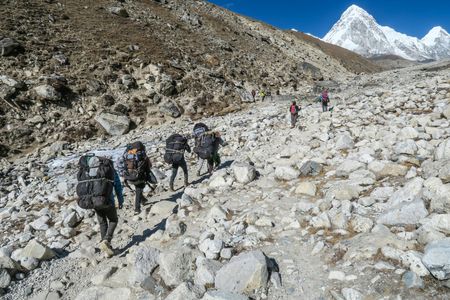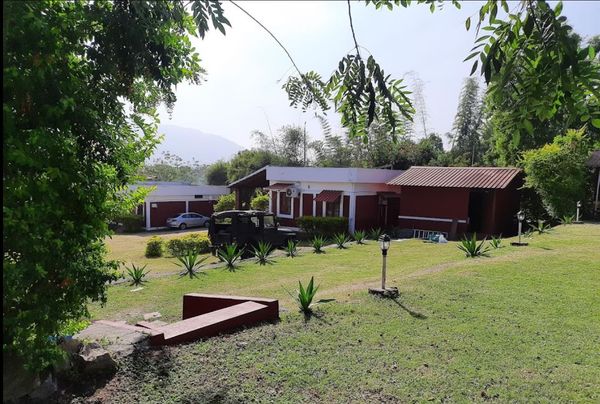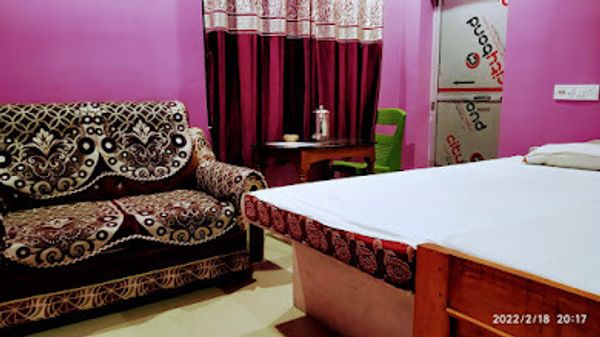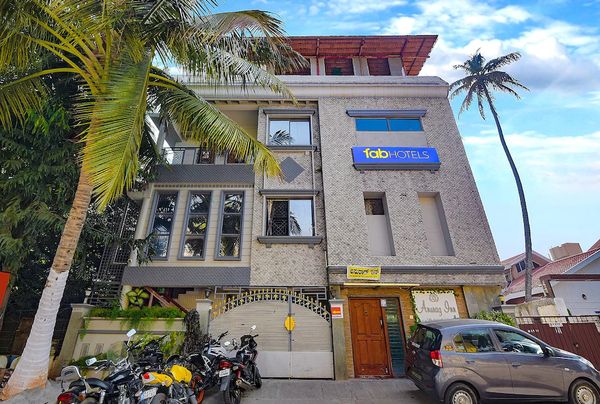Best Time to Visit Hampta Pass: A Seasonal Guide for Trekkers
 Deepak Juneja
04 Dec, 2024
10 mins read
418
Deepak Juneja
04 Dec, 2024
10 mins read
418

In the stunning Himalayas, Hampta Pass is an entry point to awe-inspiring scenery and a memorable trekking adventure. Linking the verdant Kullu Valley with the desolate, arid Spiti Valley, this elevated trek offers a striking contrast in landscapes. Its unique visual appeal makes it a popular choice for adventure enthusiasts. Recognized for its moderate challenge, the hike invites newcomers and experienced trekkers, drawing thousands annually. Did you realize that Hampta Pass regularly features as one of the top trekking destinations in India due to its stunning landscape changes and easy pathways?
This guide aims to help you choose the best time to visit Hampta Pass by considering seasonal variations in weather, trail conditions, and scenic landscapes. By planning properly, you can improve your experience and ensure a secure, memorable journey.
Overview of Hampta Pass
Situated at around 14,100 feet high, the Hampta Pass trek is a beautiful pathway connecting the lively, green Kullu Valley with the barren, dry terrain of Spiti Valley. Starting in Manali, the hike offers unparalleled convenience, contributing to its popularity with trekkers. This distinctive adventure highlights stunning terrains, including thick woodlands, vast pastures, jagged mountain paths, and calm river crossings.
Although the hike is rated as moderate in the challenge, it appeals to a broad spectrum of trekking lovers, from novices excited to discover the mountains to experienced explorers in search of varied landscapes. The combination of its stunning scenery and difficulty makes Hampta Pass genuinely memorable.
Seasonal Breakdown
Spring (March to May)
In spring, Hampta Pass starts to break free from winter's hold, as temperatures slowly increase. The thawing snow provides hikers with an exhilarating view of the landscape coming back to life. Anticipate mild temperatures, but elevated areas may still encounter cooler weather, particularly at the start of the season. Flowers begin to blossom, turning the scenery into a tapestry of lively hues.
Advantages
Spring is an ideal season to explore Hampta Pass for those who appreciate vibrant greenery and smaller crowds. The hike is easier than in winter, with a moderate difficulty level that makes it appropriate for intermediate hikers. As the snow thaws, the fields burst into color with wildflowers, forming a beautiful scene.
Suggestions
Appropriate equipment for both snowy and spring hiking conditions is crucial. Crampons or micro spikes offer traction on slippery areas, whereas waterproof apparel can shield you from unexpected rainstorms. Ensure you pack layers since temperatures may vary during the day.
Summer (June to August)
Summer arrives with hotter temperatures, featuring sunny days and sporadic showers. The scenery thrives during this time, displaying lush fields, mountain blossoms, and the lively, swiftly-moving rivers and streams that highlight the journey.
Advantages
The trails are generally accessible in summer, allowing trekkers especially beginners to fully enjoy the breathtaking landscapes of Hampta Pass. The fields are green, and the colorful scenery offers a delight for the eyes. Furthermore, there are many water sources along the path, which facilitates hydration.
Suggestions
In summer, having protection from rain is essential. A breathable, waterproof coat and durable hiking boots are suggested for tackling the damper environment. Think about using trekking poles for added stability on slick areas and frequently review the weather forecast to remain informed about possible storms.
Autumn (September to November)
Autumn is likely the most preferred season for trekking Hampta Pass, as it provides consistent weather and a clear sky. The cool air and arid conditions are ideal for hiking, and the scenery shifts to hues of gold and red, providing some of the most breathtaking vistas of the Himalayas.
Advantages
The autumn weather is usually consistent, featuring clear skies that offer stunning vistas of the neighboring mountains. The trekking circumstances are perfect, providing an excellent opportunity for trekkers eager to enjoy Hampta Pass in all its splendor. The path is dry, with little likelihood of rain, guaranteeing a seamless hike.
Suggestion
Layering is essential while trekking in autumn. Pack a light fleece for daytime, and a warmer jacket or down vest for the chilly nights. It is advisable to wear gloves and a hat since temperatures may drop significantly after dark. Be sure to include a headlamp, since the shorter daylight hours may require additional time for setting up camp in the evening.
Winter (December to February)
Winter at Hampta Pass presents a tough trekking experience, meant for only the most skilled explorers. The hike is covered in thick snow, and temperatures can drop to icy levels, resulting in a severe and relentless atmosphere. The winter scenery, nonetheless, is incredibly beautiful, featuring snow-laden mountains and icy rivers.
Advantages
Winter provides a unique experience, allowing you to witness Hampta Pass in its purest, snow-laden condition. For experienced hikers or those accompanied by skilled guides, this presents an opportunity to experience a more peaceful, solitary journey.
Suggestions
Winter trekking requires specialized skills and equipment suited for high altitudes. You need insulated boots, crampons, ice axes, and a four-season sleeping bag. Ensure you hike with a guide who is skilled in winter conditions to guarantee safety. It's essential to meticulously prepare for the hike, observe weather trends, and possess appropriate cold-weather equipment to manage the harsh conditions.
Best Season to Visit
This travel guide suggests that the best time to start the Hampta Pass trek is from June to August, offering clear weather, verdant meadows, and vibrant floral scenery. Summer is ideal for newcomers, providing pleasant weather and manageable trekking conditions. Experienced hikers, however, may prefer the fall months, celebrated for their refreshing air, consistent weather, and reduced crowds, creating a more tranquil experience. Each season has its unique charm, making Hampta Pass a diverse trekking destination.
Conclusion
In summary, selecting the ideal time for the Hampta Pass trek is crucial in creating a memorable trekking adventure. Grasping seasonal changes, climatic conditions, and required preparations enables trekkers to appreciate the trail’s splendor while maintaining safety and comfort. Regardless of the colorful flowers of summer or the clear, peaceful vistas of autumn, every season presents its distinct allure. Effective planning enables explorers to completely engage themselves, leaving unforgettable impressions of this breathtaking Himalayan expedition.
Written By:
Deepak Juneja



Hotels at your convenience
Now choose your stay according to your preference. From finding a place for your dream destination or a mere weekend getaway to business accommodations or brief stay, we have got you covered. Explore hotels as per your mood.


